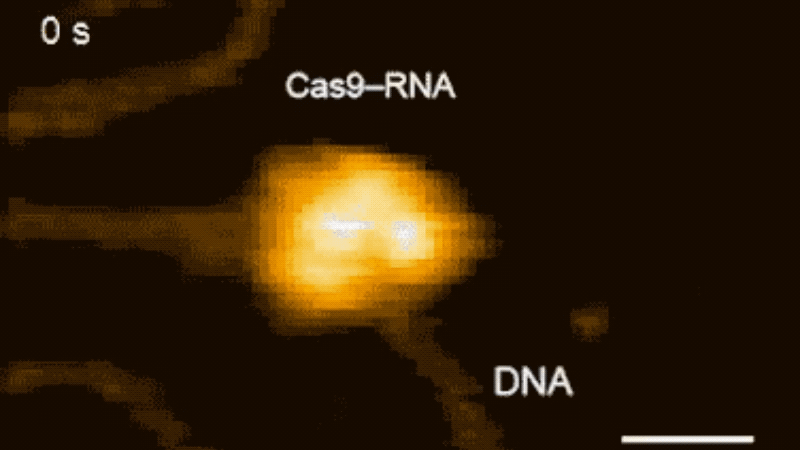Many studies have put their faith in CRISPR-Cas9 as a means to edit genes in human embryos, to fight HIV, and to explore epigenetic regulation. However, if you are someone who really needs to see CRISPR-Cas9 in action to believe it, an epic new study has you covered! So, cast away those doubts and qualms, and read on for news of the first direct visualization of CRISPR-Cas9 genome editing!
This breathtaking new study originates from the labs of Mikihiro Shibata (Kanazawa University, Japan), Hiroshi Nishimasu, and Osamu Nureki (University of Tokyo, Japan) where researchers have employed high-speed atomic force microscopy (HS-AFM) to capture live action movies of CRISPR-Cas9 to delineate the exact mechanism of action for genome editing. Other related single-molecule imaging methods typically employ the detection of fluorescent-probe labels, rather than the direct visualization of the structures and dynamics of intact molecules at the nanometer scale afforded by HS-AFM.
Lights! Camera! Action! What did these astounding new movies divulge about the process of CRISPR-Cas9 genome editing?
- Unexpectedly, Cas9 adopts a flexible modular architecture in the absence of a guide RNA (apo-Cas9)
- However, the presence of guide RNA (Cas9-RNA) leads to the formation of a stable bi-lobed effector complex
- This permits the interrogation of DNA target sites by three-dimensional diffusion rather than one-dimensional sliding
- Recognition of the target site leads to the unwinding of double-stranded DNA to form a structure known as an R-loop, which consists of a RNA–DNA hybrid and the displaced non-target DNA strand
- Real-time visualization of the Cas9-mediated DNA cleavage process demonstrates that the Cas9 HNH nuclease domain fluctuates between intermediate (I) and active docked (D) states upon DNA binding
- Drastic structural transitions mediated by the docking of the HNH active site to the cleavage site in the target DNA (near the scissile phosphate of the target strand) lead to the formation of the catalytically-active docked conformation and cleavage of the target strand
- Meanwhile, the RuvC nuclease domain cleaves the non-target strand
These astounding nanoscale movies of complex assembly, target search, and target cleavage are surely enough to make even the most ardent skeptic a CRISPR-Cas9 believer! As the researchers (or should we say directors?) note “this study provides unprecedented details about the functional dynamics of CRISPR-Cas9, and highlights the potential of HS-AFM to elucidate the action mechanisms of RNA-guided effector nucleases from distinct CRISPR-Cas systems.”
CRISPR-Cas9 in Action! (CC BY 4.0)
For CRISPR-Cas9 genome editing, seeing is believing; for all the details see Nature Communications, November 2017.

